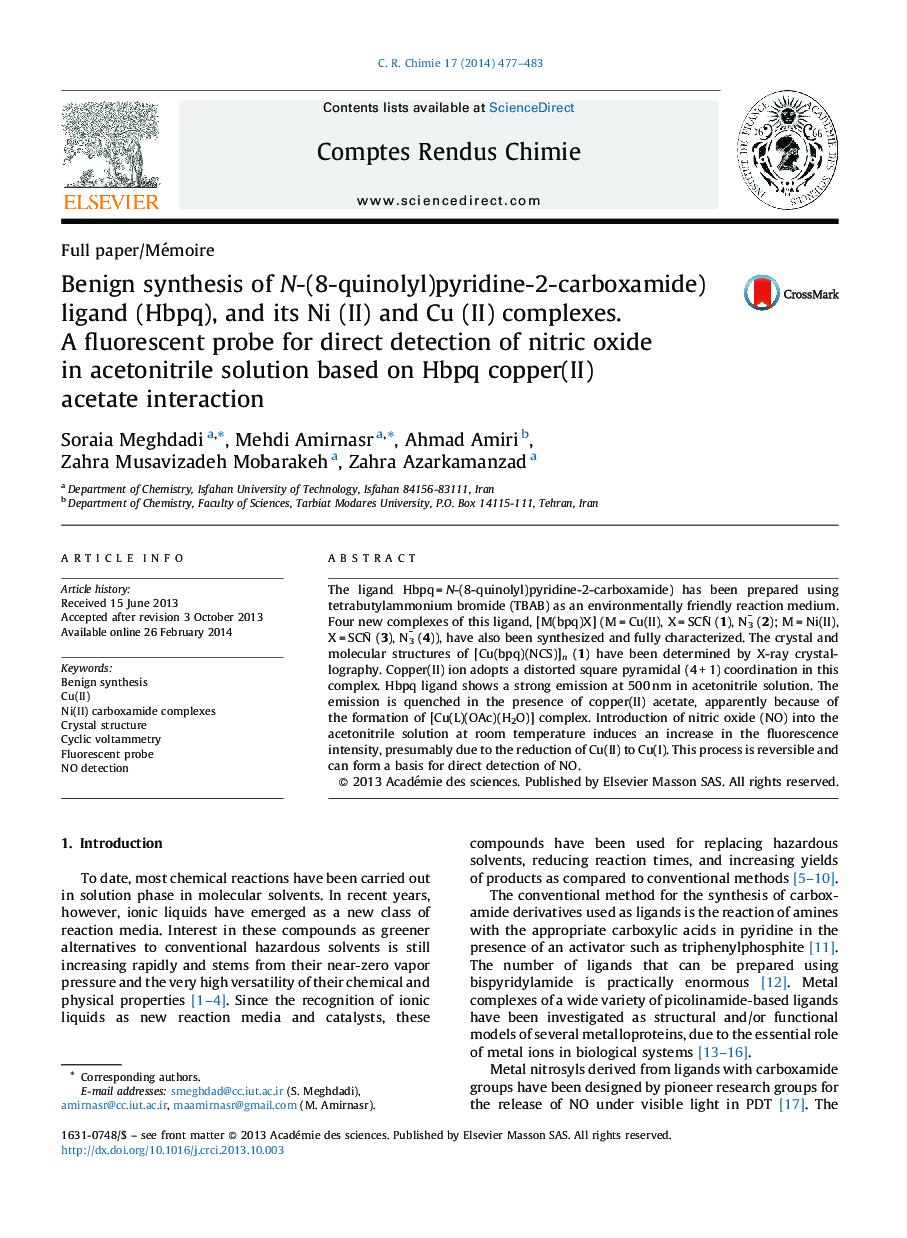| کد مقاله | کد نشریه | سال انتشار | مقاله انگلیسی | نسخه تمام متن |
|---|---|---|---|---|
| 170747 | 458412 | 2014 | 7 صفحه PDF | دانلود رایگان |

▶ Efficient synthesis of unsymmetrical carboxamide ligand, Hbpq, in ionic liquid TBAB. ▶ Synthesis and characterization of four [M(bpq)X] (M = Cu(II), Ni(II) and X = SCN, N3. ▶ X-ray crystal structure analysis of [Cu(bpq)NCS] showing a distorted spy (4+1) Cu(II). ▶ Investigation of the electrochemical properties of Hbpq and Cu(II), Ni(II) complexes. ▶ Direct NO detection using the Hbpq emission intensity in the presence of Cu(II) ion.
The ligand Hbpq = N-(8-quinolyl)pyridine-2-carboxamide) has been prepared using tetrabutylammonium bromide (TBAB) as an environmentally friendly reaction medium. Four new complexes of this ligand, [M(bpq)X] (M = Cu(II), X = SCN̄ (1), N3̄ (2); M = Ni(II), X = SCN̄ (3), N3̄ (4)), have also been synthesized and fully characterized. The crystal and molecular structures of [Cu(bpq)(NCS)]n (1) have been determined by X-ray crystallography. Copper(II) ion adopts a distorted square pyramidal (4 + 1) coordination in this complex. Hbpq ligand shows a strong emission at 500 nm in acetonitrile solution. The emission is quenched in the presence of copper(II) acetate, apparently because of the formation of [Cu(L)(OAc)(H2O)] complex. Introduction of nitric oxide (NO) into the acetonitrile solution at room temperature induces an increase in the fluorescence intensity, presumably due to the reduction of Cu(II) to Cu(I). This process is reversible and can form a basis for direct detection of NO.
The tridentate unsymmetrical ligand, Hbpq, has been prepared in high yield using TBAB as the reaction medium. The Cu(II) and Ni(II) complexes, [M(bpq)X] (X = N3, SCN), have been synthesized and fully characterized. The X-ray crystal structure of [Cu(bpq)SCN]2 has been determined. Direct NO detection using the Hbpq emission intensity in the presence of Cu(II) ion in acetonitrile is also reported.Figure optionsDownload as PowerPoint slide
Journal: Comptes Rendus Chimie - Volume 17, Issue 5, May 2014, Pages 477–483